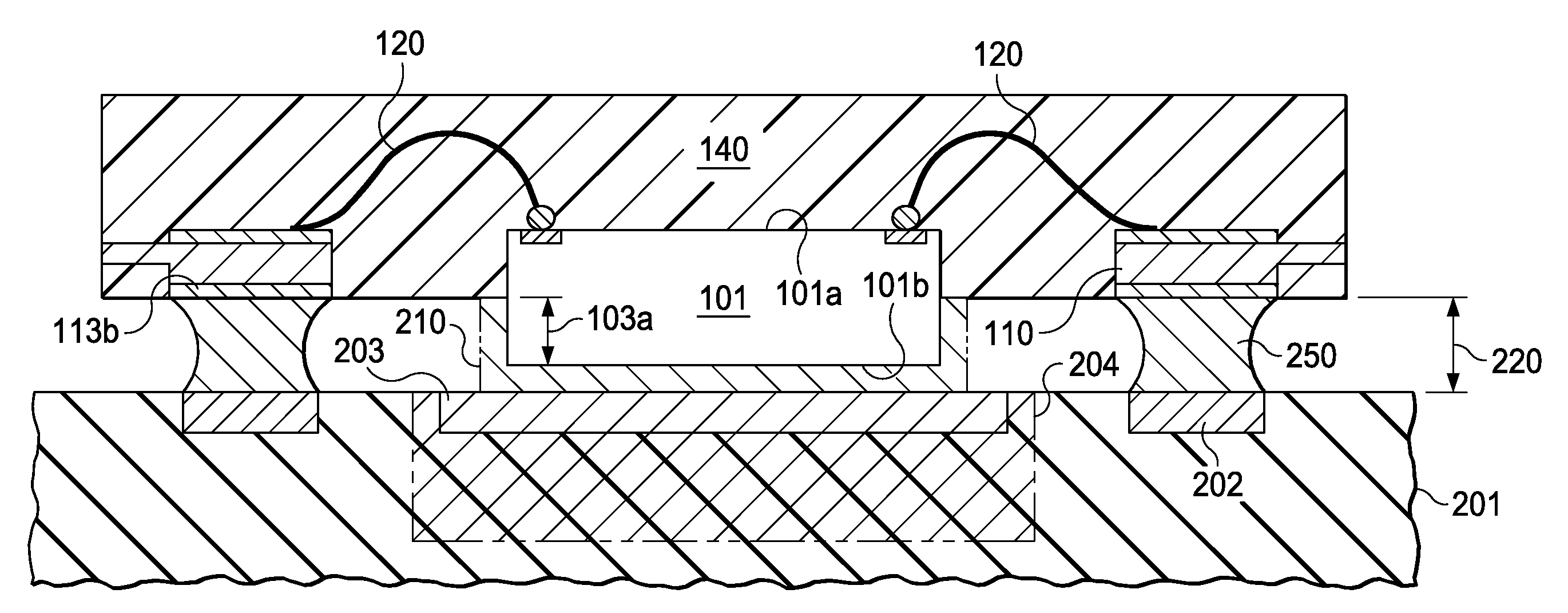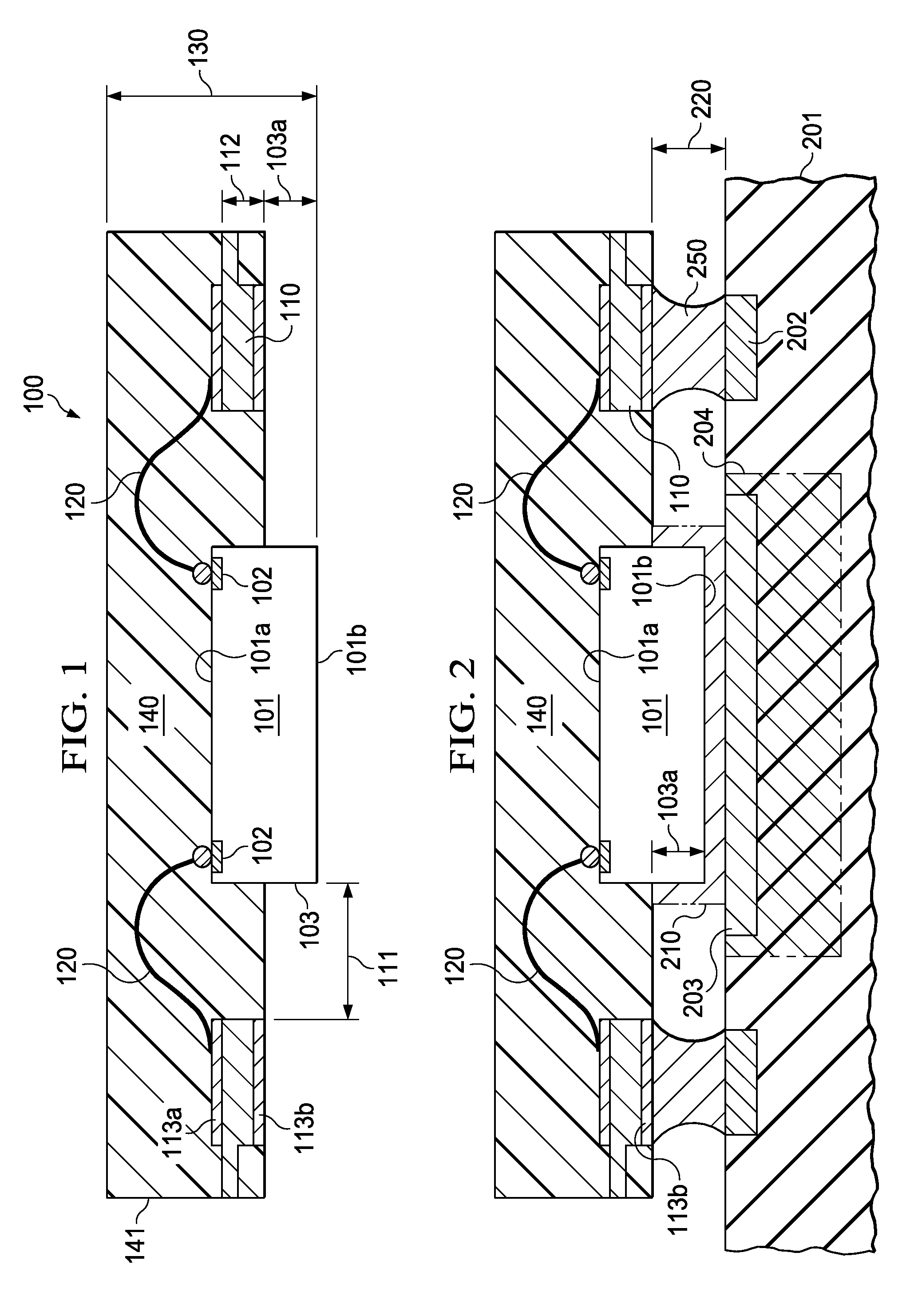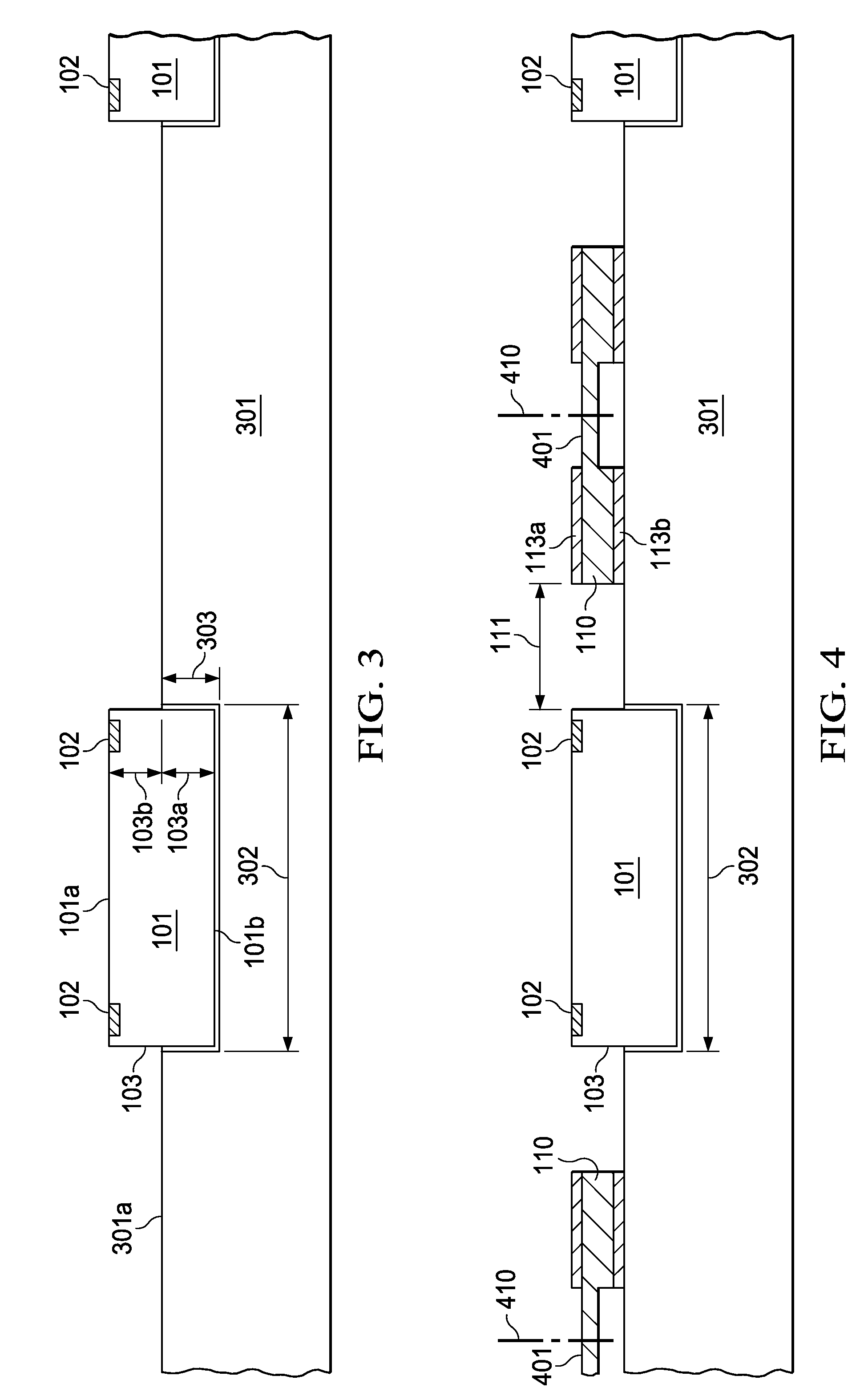Thermally improved semiconductor qfn/son package
a technology of semiconductor qfn and package, which is applied in the direction of semiconductor devices, semiconductor/solid-state device details, electrical apparatus, etc., can solve the problems of reducing the risk of breaking wafers in the transportation from the wafer fab to the assembly site, poor thermal conductivity of polymers, etc., to improve qfn/son thermal performance, enhance thermal flux vertically, and optimize thermal flux
- Summary
- Abstract
- Description
- Claims
- Application Information
AI Technical Summary
Benefits of technology
Problems solved by technology
Method used
Image
Examples
Embodiment Construction
[0026]FIG. 1 (not to scale) illustrates an embodiment of the invention, generally designated 100. The Figure shows a packaged semiconductor device without cantilevered leads, which is frequently referred to as a Quad Flat No-lead (QFN) or Small-Outline No-lead (SON) device. The packaged device includes a semiconductor chip 101 with a first surface 101a and terminals 102, a second surface 101b opposite the first surface 101a, and sidewalls 103 between the surfaces. The sidewalls determine the thickness of chip 101; in the embodiment, the thickness is preferably in the range from about 225 to 350 μm.
[0027]The numerous process steps in the semiconductor integrated circuit manufacturing process flow require the robust wafer thickness of about 275 to 350 μm in order to avoid the risk of fracture during the frequent wafer handling. However, when customer applications call for a thin overall device thickness (0.55 to 1.0 mm), conventional technology requires a thin chip, necessitating a re...
PUM
 Login to View More
Login to View More Abstract
Description
Claims
Application Information
 Login to View More
Login to View More - R&D
- Intellectual Property
- Life Sciences
- Materials
- Tech Scout
- Unparalleled Data Quality
- Higher Quality Content
- 60% Fewer Hallucinations
Browse by: Latest US Patents, China's latest patents, Technical Efficacy Thesaurus, Application Domain, Technology Topic, Popular Technical Reports.
© 2025 PatSnap. All rights reserved.Legal|Privacy policy|Modern Slavery Act Transparency Statement|Sitemap|About US| Contact US: help@patsnap.com



